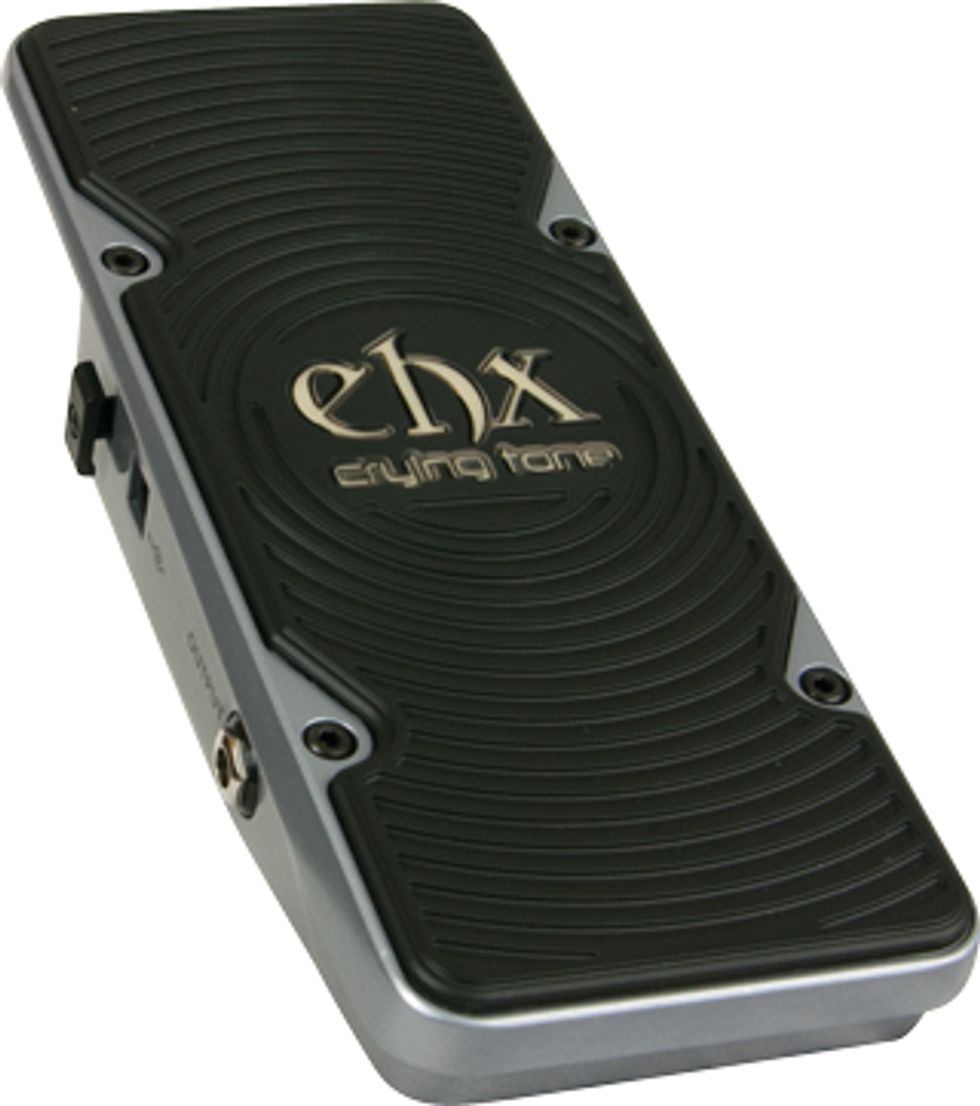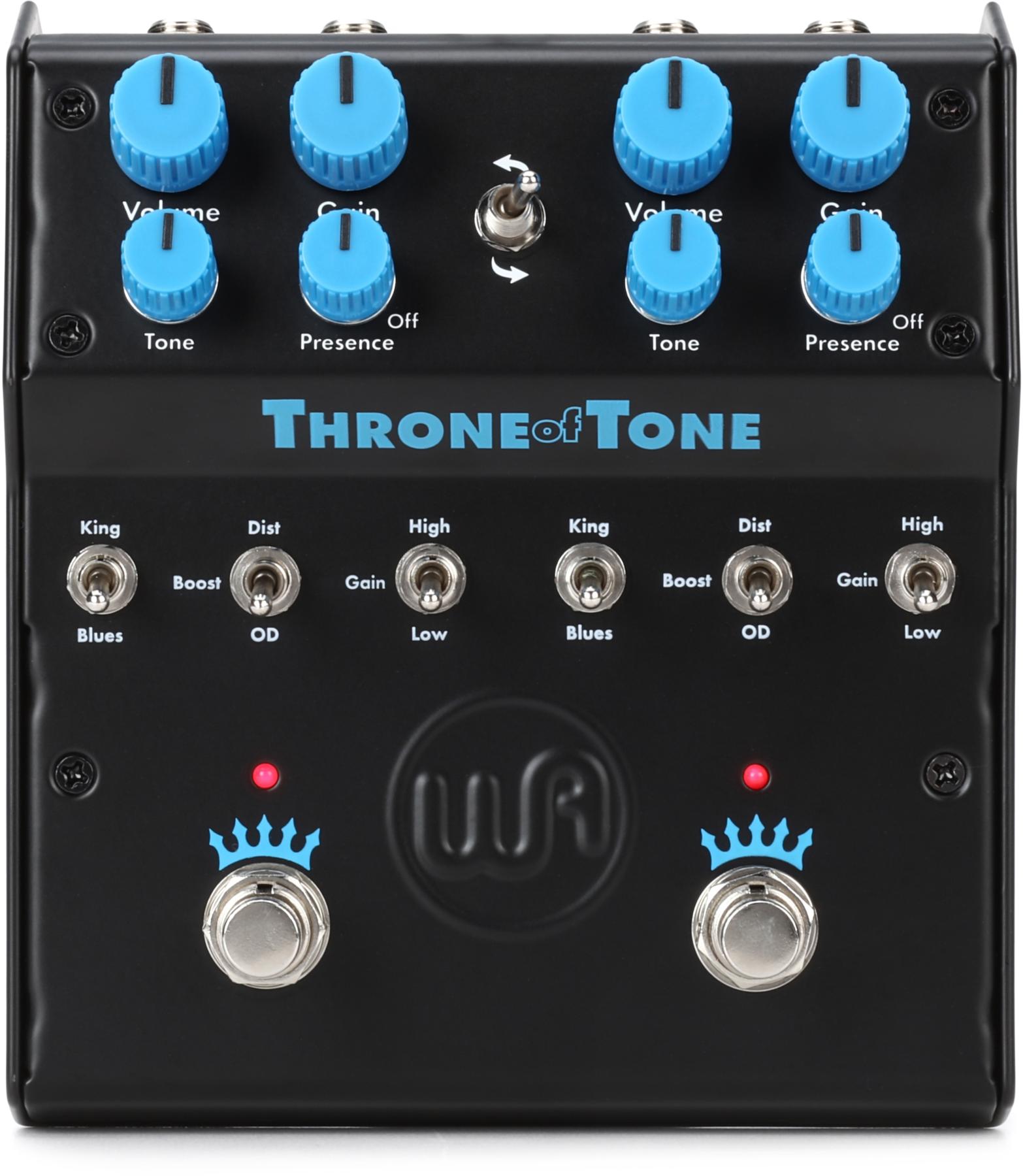
Electro-Harmonix has always had the ability to inspire double takes with its pedal designs. But the future-is-now appearance of the company’s new Crying Tone wah is about more than just looking different—instead it’s built to address the most common knocks on conventional wah design. Worn potentiometers, squeaky treadles, internal dirt buildup, and losing one of those little screw-in rubber feet (which has long been a big personal irritation) are all common wah pedal frustrations that the Crying Tone’s unibody design addresses by eliminating moving parts and switches. In addition to tackling these annoyances, EHX went to great lengths to make their new pedal virtually indestructible and create a vintage tonality that harkens back to the wah’s psychedelic heyday.
Cry Me A River
In case you vintage pedal hounds were
wondering, the Crying Tone’s circuit is in
no way related to the original ’70s Crying
Tone wah. The analog circuit is entirely
new, which suits the rather Star Trek-like
unibody enclosure that might be one of
the sturdiest effects pedals ever made. And
if you have any doubts, you can check
in with the company’s YouTube channel,
which shows the Crying Wah being run
over by a car and tossed 30 feet in the air
on a parking lot.
The pedal doesn’t have an on/off footswitch, relying instead on a sensor that detects when you’ve tilted the toe-end forward—a familiar enough motion to anyone who’s ever switched on a Cry Baby or Vox wah. When you’ve successfully turned the pedal on, the EHX logo on the top rubber pad lights up. There’s a little calibration button on the pedal’s side that sets the wah sweep in relation to the surface of the floor, so you don’t have to worry about the pedal’s sweep acting funky when playing on a surface that isn’t entirely level. The button can also set the pedal for a fixed wah tone, but it involves the cumbersome process of leaning down towards the pedal while its in the position you want to lock in, turning it slightly to its side and forward, and pressing the calibration button twice. It’s a less-than-intuitive procedure for players who just want to park the wah in one spot on the fly and leave it there. You can also mostly forget using the Crying Tone on a pedalboard—there are few practical ways to mount it because the entire pedal has to move to create its effect.
It’ll Bring A Tear To Your Eye
Operating the Crying Tone takes some
getting used to. There’s more weight in
the front of the pedal than in the back,
which makes it trickier to control its
sweep than on a standard wah with a
rocking treadle. Eventually, though, the
action of rocking it back and forth tends
to feel much more natural.
The Crying Tone’s voice has a strong late-’60s flavor that’s both smooth and transparent, and rocking it backwards rolls off the high end with very pleasing results. Combined with a Fender Stratocaster, the wah lends a warm and detailed edge to funk moves, and a spanky quack to the neck pickup for full-bodied, Stevie Ray Vaughan-inspired lead work. The pedal delivers a slight gain boost, but not nearly enough to create any significant overdrive from your amp’s preamp. This boost is just enough to raise the volume above the dry tone to make the wah’s washes more noticeable in a cluttered band setting.
Ratings
Pros:
Very wide tonal sweep. Solid as a rock. More precise
degree of control than standard wah pedals.
Cons:
Hard to mount on a pedalboard. Notched wah tones
have to be set manually.
Tones:
Ease of Use:
Build:
Value:
Street:
$87
Electro-Harmonix
ehx.com
The effect’s sweepable range is huge, and for most players it will be considerably more than they’re used to hearing from a typical wah. It takes just the smallest movement to cause a noticeable change in the effect, which is a godsend if you demand a very sensitive wah that can be tuned to a specific frequency. The big downside is that to keep the wah cocked at a given spot without using the awkward calibration process, you have to maintain the position of the entire pedal with your foot—not easy when you’re concentrating on channeling your inner Michael Schenker or Mark Knopfler. If you move your foot off, the pedal falls back to its flat position. By tipping the Crying Tone on its side and slightly forward, you can calibrate it to yield a “zero” position notched-wah tone, but doing so gives you considerably less wah sweep.
The Verdict
At its core, the Crying Tone is an undeniably
fantastic-sounding wah that can
deliver stellar vintage tone. The compact
design is uncommonly sturdy, but the
design isn’t ideal for players who want
everything mounted on a pedalboard
for quick and painless setups and teardowns
at gigs.
That said, enterprising players who value the pedal’s range and voice will find a workaround, and you have to hand it to Electro-Harmonix for taking a risk and coming up with a unique design that really does eliminate many of the wah pedal’s common flaws (even if it introduces some new ones in the process). Approach this wah with an open mind, and you’re bound to be surprised at the gloriously psychedelic tones that lurk within.







![Rig Rundown: Russian Circles’ Mike Sullivan [2025]](https://www.premierguitar.com/media-library/youtube.jpg?id=62303631&width=1245&height=700&quality=70&coordinates=0%2C0%2C0%2C0)


























